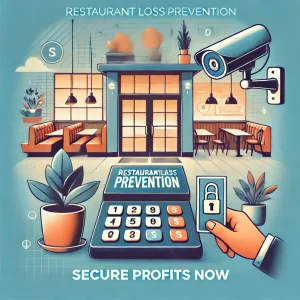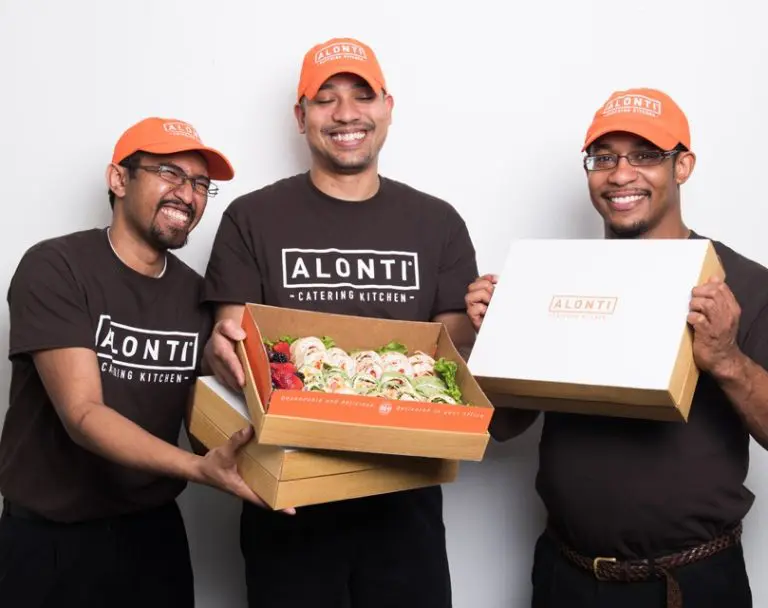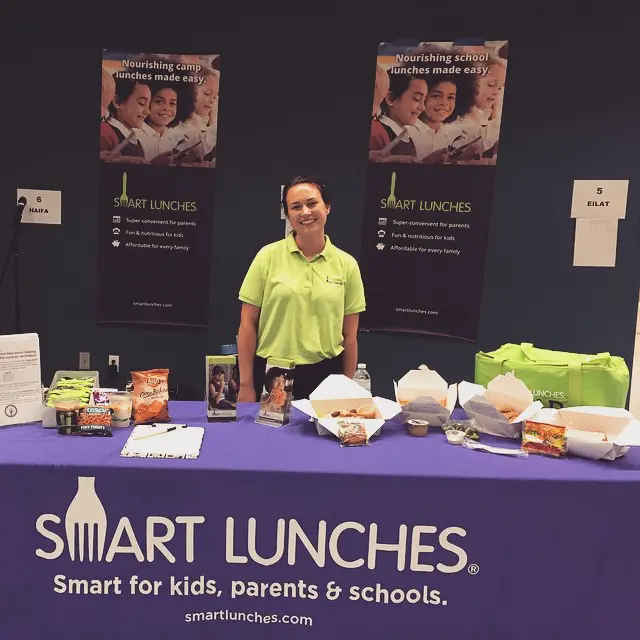In 2024, a restaurant loss prevention strategy is more crucial than ever. Every dollar counts in the highly competitive food service industry, where profit margins are razor-thin.
Theft, waste, and inefficiencies can quickly erode your hard-earned profits. But with the right strategies, you can secure your bottom line and set your restaurant up for long-term success.
In this comprehensive guide, we’ve gathered proven loss-prevention techniques from industry experts. From employee theft prevention to inventory management best practices, you’ll learn how to:
Implement effective cash-handling security procedures
Reduce food waste and optimize portion sizes
Develop a comprehensive loss prevention plan
Whether you’re a seasoned restaurateur or just starting, this article will equip you with the tools and knowledge you need to protect your profits and thrive in today’s challenging market.

Metrobi drivers are rated 4.97 out of 5
Trusted by local businesses for:
- Background-checked professionals
- Specialized in business deliveries
- Same drivers for consistency
- 4.97/5 average delivery rating
What is Restaurant Loss Prevention?
Loss prevention in business refers to the strategies and practices implemented to minimize financial losses caused by various factors such as theft, waste, and inefficiencies. In the restaurant industry, loss prevention is crucial for maintaining profitability and ensuring the long-term success of the establishment.
Employee Theft
Quick-service restaurants lose approximately 7% of sales due to employee theft.
Customer Identification
22% of shops lack any capacity to identify their customers.
How Loss Prevention Works in Restaurants
Loss prevention in restaurants involves a systematic approach to identifying potential sources of loss and implementing measures to mitigate them. This process begins with a thorough analysis of the restaurant’s operations, including employee behavior, inventory management, and cash handling procedures.
Identifying Areas of Loss
Restaurant managers and loss prevention specialists work together to identify areas where losses are most likely to occur. This may involve reviewing sales data, conducting audits, and monitoring employee activity. By pinpointing specific vulnerabilities, restaurants can develop targeted strategies to address them.
Implementing Loss Prevention Measures
Once potential loss areas have been identified, restaurants can implement various measures to prevent or minimize losses. These may include:
Training employees on proper cash handling and inventory management procedures
Installing surveillance cameras and other security systems
Conducting regular inventory audits and reconciliations
Establishing clear policies and consequences for employee theft
Implementing portion control and food waste reduction strategies
The Importance of Loss Prevention in Restaurants
Loss prevention is crucial for restaurants because it directly impacts their bottom line. Even small losses can add up over time, eroding profits and threatening the business’s sustainability. By implementing effective loss prevention strategies, restaurants can:
Reduce shrinkage and inventory loss
Improve cash flow and profitability
Enhance employee accountability and honesty
Provide a better customer experience by ensuring product availability and quality
Protect the restaurant’s reputation and brand image
Key Components of Restaurant Loss Prevention
To effectively combat losses, restaurants must address several key areas:
Employee Theft Prevention
Employee theft is a significant source of loss in the restaurant industry. Strategies to prevent employee theft include thorough background checks, regular training, and clear policies outlining consequences for theft.
Workplace Theft Admission
About 75% of restaurant workers admit to committing workplace theft at least once during their careers.
Customer Theft Prevention
While less common than employee theft, customer theft can still impact a restaurant’s bottom line. Measures such as attentive service, strategic table placement, and surveillance cameras can help deter and detect customer theft.
Dining and Dashing
Approximately 5% of guests have reported dining and dashing at least once.
Inventory Management
Proper inventory management is essential for minimizing waste and ensuring accurate tracking of goods. Regular inventory audits, par-level management, and using inventory management software can help restaurants stay on top of their stock.
Cash Handling Procedures
Establishing clear cash handling procedures, such as requiring manager approval for voids and discounts, conducting regular cash drawer audits, and using a POS system with advanced reporting capabilities, can help prevent cash theft and errors, including cash register skimming.
Food Waste Reduction
Food waste not only contributes to financial losses but also has environmental implications. Implementing portion control, using proper storage techniques, and regularly monitoring waste can help restaurants minimize food waste and improve profitability.
By understanding the importance of loss prevention and implementing strategies across these key areas, restaurants can create a culture of accountability, minimize losses, and ultimately improve their financial performance.
Employee Theft Prevention Strategies
Implement a comprehensive approach to deter and detect employee theft
Use a combination of policies, technology, and training to minimize losses
Create a culture of honesty and accountability to prevent theft from occurring
Conduct Background Checks
Conducting thorough background checks on all new hires is a critical first step in preventing employee theft. By verifying employment history and criminal records, restaurants can identify potential red flags and avoid hiring individuals with a history of dishonest behavior. Ensuring that your background check process aligns with CJIS compliance certification standards adds an extra layer of security, safeguarding sensitive employee and customer data.
Background checks should include:
Employment verification
Criminal record checks
Reference checks
Credit checks (where permitted by law)
While background checks may not catch every potential thief, they can help weed out those with a known history of theft or other dishonest behavior.
Implement Clear Policies
Establishing clear, written policies regarding theft and its consequences is essential for preventing employee theft. These policies should be communicated to all employees during onboarding and training and should be reinforced regularly.
Policies should cover:
Definition of theft
Consequences for theft (e.g. termination, legal action)
Reporting procedures for suspected theft
Employee responsibility for preventing theft
By making expectations clear and consistently enforcing policies, restaurants can create a culture where theft is not tolerated.
Use Surveillance Systems
Installing security cameras in key areas, such as cash registers and storage rooms, can be an effective deterrent for employee theft. When employees know they are being monitored, they are less likely to engage in dishonest behavior.
Surveillance systems can also help detect theft when it does occur. By regularly monitoring footage, managers can identify suspicious activity and take appropriate action.
Best Practices for Surveillance Systems
Install cameras in high-risk areas (e.g. cash registers, storage rooms)
Ensure cameras are visible to employees
Regularly monitor footage for suspicious activity
Retain footage for a sufficient period of time (e.g. 90 days)
Comply with legal requirements for surveillance in the workplace.
Implement Inventory Controls
Implementing strict inventory controls can help prevent theft of food, beverages, and supplies. By closely tracking inventory levels and investigating discrepancies, restaurants can quickly identify and address theft.
Inventory control measures may include:
Regular inventory counts
Comparison of actual vs. expected usage
Tracking of high-value items
Limited access to storage areas
Use of inventory management software
By making it more difficult for employees to steal food without detection, inventory controls can be a powerful theft deterrent.
The Importance of Inventory Tracking Software
Inventory tracking software can be a valuable tool for preventing employee theft. By automating inventory tracking and providing real-time data on usage and discrepancies, these systems make it easier to identify and investigate potential theft.
Some key features to look for in inventory tracking software include:
Real-time tracking of inventory levels
Integration with POS systems
Automated alerts for discrepancies
Detailed reporting and analytics
Mobile access for managers
Foster a Culture of Honesty
Perhaps the most important factor in preventing employee theft is creating a culture of honesty and accountability. When employees feel valued, respected, and fairly compensated, they are less likely to engage in dishonest behavior.
Some ways to foster a culture of honesty include:
Leading by example
Providing competitive pay and benefits
Recognizing and rewarding honest behavior
Encouraging open communication
Treating employees with respect
By creating a positive work environment where honesty is valued and expected, restaurants can reduce the likelihood of employee theft occurring in the first place.
Inventory Management Best Practices
Conduct Regular Inventory Audits
Regularly scheduled inventory audits are crucial for maintaining accurate stock levels and identifying potential issues. By conducting frequent inventory counts, restaurants can quickly spot discrepancies between recorded and actual stock quantities. This proactive approach allows management to investigate and address any inconsistencies promptly, reducing the risk of inventory loss due to theft, spoilage, or mismanagement.
To ensure the effectiveness of inventory audits, it’s essential to establish a clear protocol for counting and recording stock levels. Assign specific team members to perform the audits and provide them with the necessary tools and training to accurately count and record inventory. Consider implementing a rotation system where different team members conduct audits to maintain accountability and prevent collusion.
Inventory Audit Frequency
The frequency of inventory audits may vary depending on the size and complexity of the restaurant’s operations. According to industry standards, conducting full inventory audits at least once a week, with spot checks performed daily on high-value items such as alcohol, meats, and seafood, is recommended.
Use Inventory Management Software
Investing in inventory management software, developed and maintained by skilled software engineers, can significantly streamline the tracking and monitoring of stock levels. These software solutions provide real-time visibility into inventory quantities, allowing managers to make informed decisions about purchasing and menu planning. By automating the inventory tracking process, restaurants can reduce the risk of human error and save time that would otherwise be spent on manual record-keeping.
When selecting an inventory management software, look for features such as:
Real-time inventory tracking
Integration with point-of-sale (POS) systems
Low stock level alerts
Unusual usage pattern detection
Reporting and analytics capabilities
Some popular inventory management software options for restaurants include:
BinWise: A comprehensive solution that integrates with POS systems and offers features like real-time inventory tracking, purchase order management, and detailed reporting.
MarketMan: A cloud-based platform that provides inventory management, recipe costing, and vendor management tools, with a user-friendly interface and mobile app.
BlueCart: An all-in-one platform that combines inventory management, order management, and supplier communication, streamlining the procurement process.
Implement First-In, First-Out (FIFO) Method
The First-In, First-Out (FIFO) method is a widely adopted inventory management practice that ensures older items are used before newer ones. By organizing inventory in a way that prioritizes the use of products with earlier expiration dates, restaurants can minimize waste due to spoilage and expiration.
To effectively implement the FIFO method, follow these steps:
Label incoming inventory with the date of receipt
Store new inventory behind older items on shelves or in storage areas
Train staff to use older items first when preparing dishes
Regularly check expiration dates and rotate stock accordingly
Implementing the FIFO method not only reduces waste but also helps maintain food safety standards by ensuring that ingredients are used within their optimal timeframes.
Establish Par Levels and Reorder Points
Par levels refer to the minimum quantity of each inventory item that should be on hand at all times to meet the restaurant’s operational needs. By establishing par levels for all inventory items, managers can ensure that the restaurant has sufficient stock to meet customer demand without overstocking and risking spoilage.
To determine par levels, analyze historical sales data and factor in variables such as seasonal fluctuations, menu changes, sales figures, and anticipated promotions. Once par levels are set, define reorder points that trigger the purchasing process when stock levels fall below a predetermined threshold.
Regularly review and adjust par levels based on changes in sales patterns, menu offerings, and supplier lead times to optimize inventory management and reduce costs.
Conduct Regular Supplier Audits
In addition to internal inventory management practices, it’s crucial to periodically audit suppliers to ensure the quality and consistency of delivered goods. Supplier audits help identify issues such as short deliveries, inferior product quality, and inconsistent pricing, which can contribute to inventory loss and increased costs.
When conducting supplier audits, consider the following factors:
Product quality and consistency
Delivery timeliness and accuracy
Pricing stability and competitiveness
Responsiveness to issues and concerns
Adherence to food safety standards
By fostering strong relationships with reliable suppliers and regularly assessing their performance, restaurants can minimize inventory loss, ensure product quality, and maintain a competitive edge in the market.
Visualizing Cost Savings
Effective inventory management practices can lead to significant cost savings. For instance, a study by the National Restaurant Association found that restaurants can save up to 3% of their total food costs by implementing efficient inventory management systems. This translates to substantial financial benefits over time.
By regularly reviewing and optimizing inventory management practices, restaurants can ensure they are maximizing their cost savings and maintaining a competitive edge in the market.
Cash Handling Procedures
Establish a Cash Handling Policy
A comprehensive cash handling policy is essential for preventing losses in your restaurant. This policy should outline the proper procedures for handling cash, from the moment it enters the register to when it’s deposited in the bank.
Start by creating a detailed, step-by-step guide that covers every aspect of cash handling. This should include procedures for accepting payments, making changes, and handling refunds or voids. Be sure to specify who is authorized to handle cash and under what circumstances.
Once your policy is in place, train all employees on the procedures and ensure they understand the importance of following them consistently. Regularly reinforce the policy through ongoing training and spot checks to maintain compliance.
Use a Point-of-Sale (POS) System
A point-of-sale (POS) system is a powerful tool for tracking cash transactions and reducing the risk of theft or errors. By recording every sale electronically, a POS system provides a detailed record of all cash that enters and leaves your restaurant.
POS Data Mining
72.5% of organizations in the restaurant sector use POS data mining as part of their loss prevention strategies.
When selecting a POS system, look for one that offers robust reporting features. This will allow you to easily reconcile the cash in your register with the transactions recorded in the system. Set a schedule for regularly comparing POS reports with the actual cash on hand, and investigate any discrepancies immediately.
In addition to tracking sales, many POS systems also offer features like cash drawer management and user access controls. These tools can help you further restrict access to cash and monitor employee activity.
Mobile POS Usage
15% of American firms currently utilize POS systems with AI capabilities, with expectations for growth in this area.
Limit Access to Cash
One of the most effective ways to prevent cash losses is to limit the number of employees who have access to it. Designate specific individuals to handle cash transactions, such as cashiers or managers, and restrict access to the cash register and safe to only those who need it.
When assigning cash handling responsibilities, consider factors like an employee’s tenure, job performance, and trustworthiness. Avoid giving access to new or untested employees, and revoke access promptly when an employee leaves the company or changes roles.
To further control access, implement physical security measures like keeping the cash register and safe locked when not in use. Use unique login credentials for each employee who needs access, and consider implementing biometric controls like fingerprint scanners for added security.
Conduct Regular Cash Counts
In addition to reconciling POS reports with cash on hand, it’s important to conduct regular cash counts throughout each shift. This will help you quickly identify any discrepancies and take corrective action before losses escalate.
Assign a manager or supervisor to perform cash counts at set intervals, such as every few hours or at the end of each employee meals shift. Have them count the cash in the presence of the employee responsible for the register, and compare the total to the expected amount based on POS records.
If any discrepancies are found, investigate them immediately and document the findings. This will help you identify patterns or problem areas that need to be addressed through additional training or policy changes.
Use Counterfeit Detection Tools
Accepting counterfeit bills can be a significant source of cash losses for restaurants. To minimize this risk, equip your cash registers with counterfeit detection tools like UV lights, magnetic ink detectors, or special pens.
Train your cashiers to use these tools consistently for all bills of $20 or more. Have them check for common signs of counterfeiting, such as blurry printing, missing watermarks, or unusual textures. If a bill appears suspicious, have a manager verify it before accepting it as payment.
In the event that you do receive a counterfeit bill, follow the procedures outlined by the U.S. Secret Service for reporting and handling the incident. This typically involves contacting local law enforcement and filling out a report with details about the transaction and the suspect bill.
Implement Regular Audits and Reviews
Even with strict cash handling policies and procedures in place, it’s important to regularly audit and review your processes to identify areas for improvement. Schedule periodic audits to assess compliance with your policies and identify any weaknesses in your controls.
During these audits, review POS reports, cash count records, and other documentation to verify that all transactions are being properly recorded and reconciled. Look for patterns or discrepancies that may indicate theft, fraud, or non-compliance with your policies.
Based on your findings, make any necessary updates to your policies or procedures to address identified risks or weaknesses. This may include revising your cash handling guidelines, updating your POS system settings, or providing additional training to employees.
It’s also a good idea to regularly review your cash handling performance metrics, such as cash over/short totals and frequency of discrepancies. Set targets for acceptable levels of variance, and investigate any deviations outside of those ranges.
By continuously monitoring and refining your cash handling processes, you can stay ahead of potential issues and minimize losses over time. Regular audits and reviews are an essential component of any effective loss prevention strategy.
Food Waste Reduction Strategies
Monitoring portion sizes and utilizing inventory tracking can significantly reduce food waste
Implementing a comprehensive food waste reduction program engages staff and drives continuous improvement
Donating excess food and repurposing ingredients maximize resource utilization and support local communities
Monitor Portion Sizes
Standardizing portion sizes is a critical step in minimizing overproduction and waste in restaurants. By ensuring that each dish is served with the appropriate amount of food, kitchens can reduce the likelihood of excess ingredients being prepared and ultimately discarded.
To effectively implement portion control, restaurant managers should:
Develop Standard Recipes
Create detailed recipes that specify the exact quantities of each ingredient required for each dish. This helps maintain consistency and prevents over-preparation.
Train Kitchen Staff
Provide comprehensive training to kitchen staff on proper portioning techniques. This includes using measuring tools, such as scales and portion scoops, to ensure accuracy and consistency.
Conduct Regular Audits
Periodically review portion sizes to ensure adherence to standards and identify any areas for improvement. This can be done through random plate checks or by analyzing customer feedback.
Utilize Inventory Tracking
Effective inventory management is essential for reducing food waste in restaurants. By closely monitoring food usage and waste, managers can identify areas for improvement and adjust ordering and preparation accordingly.
Implement an Inventory Management System
Invest in a robust inventory management system that allows for real-time tracking of food usage and waste. This can be a standalone software solution or integrated with the restaurant’s point-of-sale (POS) system.
Analyze Historical Data
Regularly review historical inventory data to identify trends in food usage and waste. This information can be used to optimize ordering quantities and frequency, as well as to adjust menu offerings based on popularity and profitability.
Conduct Regular Inventory Counts
Perform physical inventory counts regularly to ensure accuracy and identify any discrepancies between actual and recorded stock levels. This helps prevent over-ordering and reduces the risk of spoilage.
According to a study by the National Restaurant Association, restaurants that implement inventory tracking systems can reduce food waste by up to 50%.
Implement a Food Waste Reduction Program
Developing a comprehensive food waste reduction program is key to driving long-term, sustainable improvements in restaurant operations. An effective program should engage restaurant staff at all levels and foster a culture of continuous improvement.
Establish a Food Waste Reduction Team
Create a cross-functional team responsible for developing and implementing waste reduction strategies. This team should include representatives from kitchen staff, management, and front-of-house personnel.
Set Measurable Goals
Establish specific, measurable goals for reducing food waste, such as decreasing waste by a certain percentage within a defined timeframe. Regularly track progress against these goals and adjust strategies as needed.
Engage Staff in Identifying Solutions
Encourage staff to actively participate in identifying and implementing waste reduction strategies. This can be done through regular meetings, suggestion boxes, or incentive programs that reward innovative ideas.
Donate Excess Food
Donating excess food to local charities and food banks is an effective way to reduce waste while supporting the community. Many restaurants partner with organizations that facilitate the safe and efficient donation of surplus ingredients and prepared meals.
Identify Local Donation Partners
Research local food banks, shelters, and other charitable organizations that accept food donations. Establish relationships with these partners and develop a plan for regular donations.
Ensure Food Safety
Follow strict food safety guidelines when preparing and storing food for donation. This includes properly cooling and packaging items and adhering to temperature control requirements during transport.
Track Donations for Tax Benefits
Keep detailed records of food donations, as these may be eligible for tax deductions. Consult with a tax professional to ensure compliance with local regulations and to maximize potential benefits.
In the United States, the Bill Emerson Good Samaritan Food Donation Act provides liability protection for businesses that donate food in good faith.
Repurpose Excess Ingredients
Finding creative ways to repurpose excess ingredients can help reduce waste while offering unique and appealing menu items. Chefs can collaborate to develop dishes that incorporate surplus ingredients, such as turning vegetable trimmings into soups or sauces.
Conduct Regular Kitchen Audits
Perform daily audits of the kitchen to identify ingredients nearing expiration or surplus food items that can be repurposed. Encourage staff to communicate these findings and suggest potential uses.
Develop “Specials” Menus
Create daily or weekly “specials” menus that feature dishes made with repurposed ingredients. This not only reduces waste but also offers customers an opportunity to try unique, limited-time offerings.
Train Staff on Creative Repurposing
Provide training to kitchen staff on techniques for creatively repurposing ingredients, such as pickling, fermenting, or dehydrating. Encourage experimentation and sharing of ideas among team members.
Some popular repurposed dish ideas include:
“Day-old bread” pudding
“Vegetable scrap” stock
Pickled vegetable salads
By implementing these food waste reduction strategies, restaurants can significantly minimize their environmental impact, reduce costs, and improve overall efficiency. As the industry continues to evolve, prioritizing waste reduction will become increasingly critical for long-term success and sustainability.
Benefits of Effective Restaurant Loss Prevention
Increased Profitability
Implementing effective loss prevention strategies directly impacts a restaurant’s bottom line. By reducing losses from theft, waste, and inefficiencies, restaurants can significantly increase their profitability. According to a study by the National Restaurant Association, the average restaurant loses 3.5% of its total sales to theft and waste. This may seem like a small percentage, but for a restaurant with an annual revenue of $1 million, this translates to a loss of $35,000 per year.
Reducing Theft
Employee theft is a major concern in the restaurant industry. The U.S. Chamber of Commerce estimates that 33% of business bankruptcies are caused by employee theft. Implementing strict inventory control measures, such as regularly conducting inventory audits and using technology to track inventory levels, can help identify and prevent employee theft.
Minimizing Waste
Food waste is another significant contributor to restaurant losses. According to ReFED, a non-profit organization dedicated to reducing food waste, the restaurant industry generates 11.4 million tons of food waste annually, costing restaurants $25 billion each year. By implementing effective waste reduction strategies, such as portion control, proper food storage, and repurposing ingredients, restaurants can minimize food waste and increase their profitability.
Improved Employee Morale
Creating a culture of accountability and trust through effective loss-prevention measures can significantly boost employee morale. When employees feel that their workplace is secure and that their contributions are valued, they are more likely to be engaged and productive. Conversely, when theft and waste are rampant, employees may feel that their efforts are not appreciated, leading to decreased job satisfaction and higher turnover rates.
Implementing a comprehensive loss prevention plan that involves all employees can foster a sense of ownership and responsibility. By providing training on loss prevention best practices and encouraging employees to report suspicious activities, restaurants can create a positive work environment where everyone is working towards a common goal.
Enhanced Customer Experience
Effective loss prevention strategies can also lead to an enhanced customer experience. When restaurants have consistent inventory levels and well-managed operations, they can ensure that menu items are always available and that customers receive high-quality service.
Stockouts, or the inability to fulfill a customer’s order due to a lack of inventory, can be frustrating for customers and damaging to a restaurant’s reputation. By implementing strict inventory control measures, restaurants can minimize stockouts and ensure that customers can always order their favorite dishes.
Moreover, when restaurants are well-managed and efficient, staff can focus on providing excellent customer service rather than dealing with the consequences of theft and waste. This can lead to higher customer satisfaction and loyalty, as customers are more likely to return to a restaurant where they had a positive experience.
Improved Food Safety
Effective loss prevention strategies also contribute to improved food safety in restaurants. Proper food storage and handling practices, which are essential for reducing food waste, also help prevent foodborne illnesses. By ensuring that food is stored at the correct temperatures, labeled properly, and rotated regularly, restaurants can minimize the risk of contamination and protect their customers’ health.
Additionally, implementing strict hygiene protocols for employees, such as regular hand washing and wearing gloves when handling food, can further reduce the risk of foodborne illnesses. When restaurants prioritize food safety as part of their loss prevention plan, they not only protect their customers but also safeguard their reputation and bottom line.
Reduced Insurance Premiums
Implementing effective loss prevention strategies can also lead to reduced insurance premiums for restaurants. Insurance companies often offer lower premiums to businesses that demonstrate a commitment to risk management and loss prevention. By implementing measures such as security cameras, employee background checks, and regular safety training, restaurants can show insurers that they are proactively working to minimize losses and risks.
Pandemic Losses
The restaurant industry fell short by $240 billion in expected profits due to the pandemic.
Moreover, by reducing the frequency and severity of incidents such as theft, accidents, and foodborne illnesses, restaurants can lower their claims history and maintain a favorable risk profile. This can result in lower insurance premiums over time, further contributing to the restaurant’s profitability.
Implementing a Comprehensive Loss Prevention Plan
Implementing a comprehensive loss prevention plan is essential for protecting your restaurant’s bottom line and ensuring long-term success. By following a systematic approach, you can effectively address potential risks and minimize losses.
Conduct a Risk Assessment
The first step in creating an effective loss prevention plan is to conduct a thorough risk assessment. This process involves identifying potential areas of loss and vulnerability within your restaurant’s operations.
Identify Potential Areas of Loss and Vulnerability
Begin by examining all aspects of your restaurant, including:
Inventory management
Cash handling procedures
Employee theft
Customer theft
Vendor fraud
Food waste
Equipment maintenance and repair
Consider involving key staff members, such as managers and experienced employees, to help identify potential risks. Their insights can be invaluable in uncovering vulnerabilities that may not be immediately apparent.
Prioritize Risks Based on Likelihood and Potential Impact
Once you have identified potential risks, prioritize them based on their likelihood of occurring and the potential impact they could have on your restaurant’s success. This will help you focus your efforts on the most critical areas when developing your loss prevention plan.
Develop Policies and Procedures
With your prioritized list of risks in hand, it’s time to develop detailed policies and procedures to address each one. These policies should be clear, concise, and easy for employees to understand and follow.
Create Detailed Policies and Procedures to Address Identified Risks
For each identified risk, create a specific policy or procedure that outlines:
The steps employees should take to prevent the risk from occurring
The proper response if the risk does occur
The consequences for not following the policy or procedure
For example, if employee theft is identified as a high-priority risk, your policy might include:
Requiring multiple employees to be present during cash counting and reconciliation
Implementing a zero-tolerance policy for theft, with immediate termination as a consequence
Conducting regular audits of cash drawers and inventory
Involve Key Stakeholders in the Development Process
As you develop your policies and procedures, involve key stakeholders such as managers, experienced employees, and even external experts like loss prevention consultants. Their input can help ensure that your policies are practical, effective, and aligned with your restaurant’s unique needs and culture.
Train Employees
Once your policies and procedures are in place, it’s crucial to provide comprehensive training to all employees. This ensures that everyone understands their role in preventing losses and knows how to respond if an incident occurs.
Provide Comprehensive Training on Loss Prevention Policies and Procedures
Your training program should cover:
An overview of the restaurant’s loss prevention plan and its importance
Detailed explanations of each policy and procedure
Real-world examples and scenarios to help employees understand how to apply the policies in practice
The consequences of not following the policies and procedures
Consider using a variety of training methods, such as in-person sessions, online courses, and hands-on practice, to ensure that employees fully grasp the material.
Regularly Reinforce Training Through Meetings and Refresher Courses
Loss prevention training should not be a one-time event. Regularly reinforce your policies and procedures through ongoing meetings, refresher courses, and other training opportunities. This helps keep loss prevention top-of-mind for employees and allows you to address any questions or concerns that may arise over time.
Monitor and Evaluate
Implementing a comprehensive loss prevention plan is not a set-it-and-forget-it endeavor. To ensure its ongoing effectiveness, you must continuously monitor your plan’s performance and make adjustments as needed.
Continuously Monitor the Effectiveness of Loss Prevention Strategies
Establish metrics and key performance indicators (KPIs) to track the success of your loss prevention efforts. These might include:
Reduction in inventory shrinkage
Decrease in cash discrepancies
Improved employee retention rates
Increased customer satisfaction scores
Regularly review these metrics to identify areas where your plan is succeeding and where it may need improvement.
Regularly Evaluate and Adjust the Plan Based on Results and New Risks
As your restaurant evolves and new risks emerge, your loss prevention plan must adapt accordingly. Schedule regular evaluations of your plan, involving key stakeholders to assess its effectiveness and identify any necessary updates.
Be proactive in addressing new risks as they arise, and don’t hesitate to make changes to your policies and procedures when needed. By staying vigilant and adaptable, you can ensure that your loss prevention plan remains a powerful tool for protecting your restaurant’s profitability and long-term success.
How Long Does it Take for a Restaurant to Become Profitable?
Factors Affecting Restaurant Profitability Timeline
Several key factors influence how quickly a restaurant can become profitable:
1. Location: The restaurant’s location plays a crucial role in determining its success. Restaurants in high-traffic areas with a strong customer base are more likely to become profitable faster than those in less desirable locations. Rent and utility costs also vary by location, impacting the bottom line.
2. Concept: The restaurant’s concept, including its menu, pricing, and target audience, affects profitability. Concepts that align with current market trends and customer preferences have a better chance of success. Well-executed unique concepts can also attract customers and generate buzz, leading to faster profitability.
3. Management: Effective restaurant management is essential for achieving profitability. Experienced managers who can control costs, optimize operations, and maintain high-quality service can help a restaurant become profitable more quickly. Poor management, on the other hand, can lead to excessive waste, inefficiencies, and customer dissatisfaction, delaying profitability.
The Importance of a Solid Business Plan
A comprehensive business plan is crucial for setting realistic expectations and guiding a restaurant toward profitability. The plan should include:
Financial Projections: Detailed financial projections help restaurant owners anticipate costs, revenue, and the time required to break even. These projections should account for variable costs such as food, labor, and utilities, as well as fixed costs like rent and equipment.
Marketing Strategy: A well-defined marketing strategy outlines how the restaurant will attract and retain customers. This may include social media campaigns, local partnerships, and targeted promotions. An effective marketing strategy can help a restaurant reach profitability faster by driving customer traffic and loyalty.
Contingency Planning: The business plan should also include contingency plans for unexpected challenges, such as economic downturns or supply chain disruptions. By anticipating potential obstacles and having strategies in place to mitigate their impact, restaurants can maintain a steady path toward profitability.
Accelerating Profitability Through Loss Prevention
Implementing effective loss-prevention strategies can significantly reduce the time it takes for a restaurant to become profitable. Loss prevention focuses on minimizing unnecessary expenses and maximizing efficiency in all aspects of restaurant operations.
Inventory Management and Waste Reduction
Proper inventory management is essential for preventing waste and controlling food costs. Restaurants should:
Use inventory tracking systems to monitor stock levels and identify slow-moving items.
Implement first-in, first-out (FIFO) inventory rotation to minimize spoilage.
Train staff on proper food handling and storage techniques to reduce waste.
Regularly analyze sales data to optimize menu offerings and portion sizes.
By reducing waste and optimizing inventory, restaurants can lower food costs and improve profitability.
Employee Training and Retention
Investing in employee training and retention can also accelerate a restaurant’s path to profitability. Well-trained employees are more efficient, provide better customer service, and are less likely to make costly mistakes. Additionally, high employee turnover can be expensive, as recruiting and training new staff requires time and resources.
To improve employee retention and performance, restaurants should:
Provide comprehensive training programs that cover all aspects of restaurant operations.
Offer competitive wages and benefits to attract and retain top talent.
Foster a positive work environment that encourages teamwork and communication.
Recognize and reward employee achievements to boost morale and motivation.
By prioritizing employee training and retention, restaurants can reduce turnover costs and improve overall efficiency, leading to faster profitability.
Protecting Your Restaurant’s Bottom Line
Implementing a comprehensive loss prevention strategy is essential for running a successful and profitable restaurant. By focusing on employee theft prevention, inventory management, cash handling procedures, and food waste reduction, you can minimize financial losses and improve your restaurant’s overall performance.
Investing in your employees through training, clear policies, and a culture of accountability will not only reduce theft but also boost morale and job satisfaction. When your staff feels valued and trusted, they are more likely to be engaged and committed to the success of your restaurant.
Effective inventory management is key to preventing waste and ensuring your own restaurant business runs smoothly. By conducting regular audits, using inventory management software, and implementing the FIFO method, you can optimize your stock levels and reduce costs.
Are you ready to take your restaurant’s loss prevention efforts to the next level? Start by conducting a risk assessment and developing a tailored plan that addresses your unique challenges. With the right strategies in place, you’ll be well on your way to increased profitability and long-term success.

























